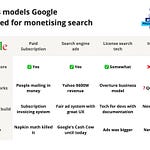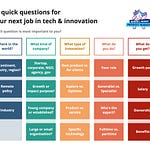🧪 Experiment: Podcast version available above!
⚠️ Warning: Longer article with many visuals. Click the above title to read in your browser.
Two months ago, a tweet of mine got almost half a million likes.
I got some new subs & followers out of it, but it didn’t go as planned.
In this post:
What is it like to go viral
Some funny highlights from the reply tweets
Statistics: how did it convert?
How I went viral
I woke up drowsy. Then, I saw this projection on my wall. Snapped a picture. Tweeted it.

At the end of the working day, it got 10 likes.
3 hours later, two accounts retweeted it. Before I went to bed I got 60 likes. I found it cute that this random image got some attention.
I checked out those two accounts, they had 5k and 20k followers. They must have started something.
Because I was shocked when I woke up to 170k likes. The entire weekend, likes came pouring in. At some point, it got 2.000 new likes per minute. I muted notifications after a day.
In the comments
With more than 1000 comments there was no end. These are some highlights, but to see for yourself, click here
People didn’t understand
This was the most liked reply.
People have never seen this effect before. I blame public education. A lot of people posted links to YouTube videos explaining the camera obscura effect. Also, there was some debate on who discovered this effect.
People wanted to see my hole
So if you want to know how this effect works, the requirement is a dark room and a tiny hole. My curtains created just that hole.
People were curious about the hole 😏. That photo of a 1.5cm square got over 4000 likes.
Also, some people disagreed with me that it was in fact that hole. Gotta love the internet.
People made me laugh
There were quite some jokey comments. My favourite reply:
Reposts everywhere
Friends send me messages “You are internet famous”. They saw my Tweet on 9gag, tumblr, imgur, Reddit and iFunny. The reach must have been enormous. How big? Well..
Onto the statistics
Twitter gives you quite some stats. Let’s do a deep dive.
First: Is 470.000 a lot?
Yes, kinda. The most liked tweet ever got 7.2 million likes. A lot of the top 30 most liked tweets ever are in the 2M-3M realm. It probably is a power-law distribution with a long tail, but I guess a tweet with half a million likes is in the top ±10-20% of tweets (don’t take my word for it).
Reached the equivalent of my country
The tweet had 18M impressions. I live in a country with around 17.5 million inhabitants. I know an impression doesn’t count as much, but still. The quantity baffles me.
Like & retweet ratio
2.5% of impressions liked the image.
2 in 1000 views retweet the image, totalling in almost 40k retweets.
Like-retweet ratio 1:12
I often see like-retweet ratios of 1:10 on Twitter (anecdotal evidence). The retweets are important.
I’m not sure if you have seen this video of 2014 mousetraps with 2015 pingpongballs. You need this type of ongoing chain reaction. It carried on for 4 days.
Conversions
There’s no value in likes or views. Did I get anything out of it?
+310 Twitter followers
159.000 visits on my profile
159k visits is a lot compared to ±2000 for February or March.
310 new followers
Visit → Follow Conversion rate: 0.2%
It’s hard to find benchmarks on this number, but 0.2% seems very low. I’ve seen people report 600 visits from ProductHunt and 49 new followers.
Here’s the catch: It’s not illogical, my profile has nothing to do with the photo. People drop off.
+84 newsletter subs
That first morning I was disappointed because I felt I missed an opportunity to promote my newsletter (what else am I on Twitter for besides snarky tweets?)
Quickly, I added this reply to this viral tweet promoting my newsletter. But, at 170k likes, I was just thinking that I was too late to the party.
In the end, the ‘Join my newsletter’-tweet got 373.000 views. Free exposure. Twitter tells me that 344 people clicked this link.
This converted to the highest single-day increase in subscribers to my newsletter: 77. In total, I got 84 new subscribers. Going from 311 to 395. Not bad.

If that number of 344 link clicks is all visits, the conversion of my substack landing page is pretty good at almost 25% (84/344).
I think that’s a little bit too good to be true. The substack link was also at my profile, so maybe it’s a bit lower. But, most signups only started to come in when I posted that link there. Before that, I only saw 1 new signup.
Because I only added the link at 170k, with 2/3rd of likes and views coming in after I put up the link, I probably missed out on about 20-30 subscribers.
Quality of new subscribers
I waited for a little to post this piece. As part of an experiment. How titillating. Here’s why: In my first newsletter after this viral tweet, I saw a drop in engagement.
Substack allows me to track open rates of emails. Where I was hitting around 54% (blue line below), all of a sudden I had a 46%.
I was surprised. Was the article on switching that bad?
Shared this stat drop with a friend of mine. He told me a story David Perell has shared when one of his tweets went viral. Thousands of visitors on his website. Very low conversion.
Therefore I waited for 5 editions to see if the pattern holds. See the red line: it does. Until new subscribers came in, it remained around 47%.

Moral of the story: Mass attention can lead to lower quality traffic. Makes sense. Especially given that I grew from 311 to 395. That’s almost 25% growth. My open rate didn’t drop by that amount, but by quite a bit.
Sorry, but the OG followers are just higher quality. Props to you ;)
Would I share my newsletter below the next viral tweet? Sure thing. I don’t care as much about the open rate, but I found the pattern interesting.
Reflection: ‘This’ goes viral!?
That Friday I was having a slow day. The half a million likes didn’t cheer me up. I mean, it’s cool, but not that cool. Why?
Because this image was snapped in 3 seconds. I didn’t have a connection with the ‘work’. I was just looking at this viral phenomenon for a weekend, which was funny and interesting.
People were curious about the picture when I mentioned this viral experience in real life. I showed about five people the picture in real life. 5 out of 5 let out a literal ‘woah’.
This maybe explains what was captivating about it. Very snackable content. Still, kind of unintentional. And off-putting in a funny way. Here’s why.
With my Dutch webcomics (Twitter or Insta) I’m grinding my way up, spending hours per creation. Most get about 10 to 30 likes and if I’m lucky 100.
An average article on this newsletter makes 500 views, my most viewed article has 1337 views. I usually spend 4 to 8 hours on a post.
I just finished my 2nd year of my 5 year PhD. The output of that process, a scientific book, will be fully read by 10 people, maybe.
And this tweet which took 30 seconds to create reached millions of people on Twitter. Consider a couple of extra million views on the reshares on other platforms. That easily is 20 million people.
I can conclude: I’ve peaked in terms of reach for my lifetime.
Not a single creation of mine is likely to hit that many people ever again.
All by accident. I think that is hilarious.
How was this one?
Great - Good - Meh
Voting is anonymous.
Listened to the podcast version? Please let me know how it was!
Vote above and write your thoughts in the open text box (anonymous)
Reply to this email























Share this post